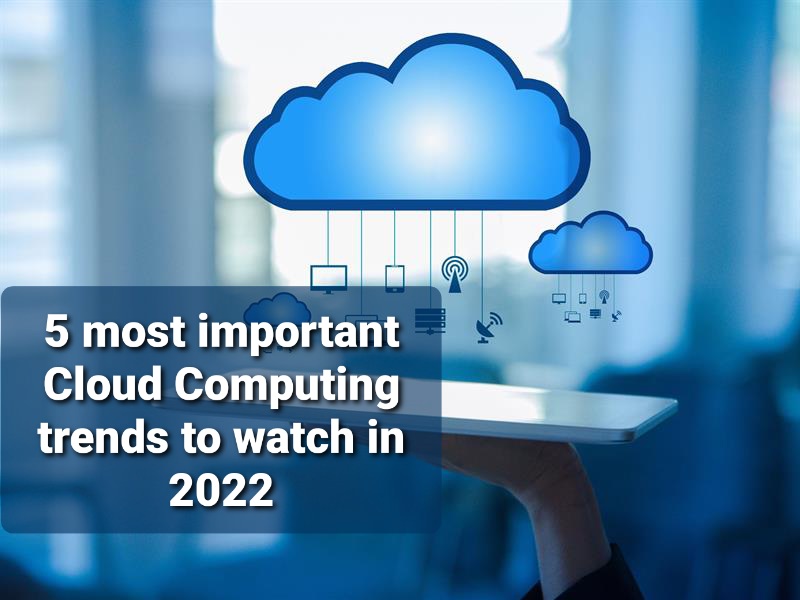
5 most important cloud computing trends to watch in 2022
Consumer and business use of cloud storage has expanded in recent years, with Gartner forecasting $332 billion in public cloud spending this year, up 23 percent from 2020. Much of the growth may be ascribed to the pandemic-driven shift to remote work, and the cloud business is constantly innovating to meet demand, as well as increasing adoption of existing approaches. Here are five cloud computing trends to watch in 2022 and beyond:
5 cloud computing trends to watch in 2022

Containerization:
Containerization services such as Docker or Google’s Kubernetes enable customers to create containerized applications, which are rapidly growing in popularity in the workplace. Containers combine the advantages of virtual machines with the power of a self-contained operating system to deliver consistent program performance across several machines. Containers allow apps to be fully packaged with all of their dependencies while avoiding the additional resource demands of a full VM. The portability of a container in the cloud ensures performance uniformity throughout a complete enterprise as well as resource distribution. Users also have more control over versioning, including the ability to track differences between containers and roll back as necessary.
Multi-Cloud and Hybrid Cloud Environments
Businesses can keep their data on-site and benefit from minimal latency and fast data transmission speeds with a private cloud. Data is offloaded to third-party server providers in a public cloud, cutting infrastructure expenses. Hybrid clouds offer the middle ground, ideally suited for businesses with storage needs such as huge media files that require frequent access from local devices while dumping archival media to a public cloud provider. Multi-clouds are when two public clouds work together to provide increased data redundancy. By 2022, the market for these solutions is expected to have grown by 20% year over year, reaching a value of about $100 billion.
Internet of things
Simply put, the Internet of Things (IoT) refers to the proliferation of “smart” gadgets that may be allocated an IP address. Lightbulbs that are connected to a phone can dim or brighten automatically based on the time of day. Smart watches can connect to news services and display the latest headlines on your wrist. Software upgrades are downloaded and installed in electric vehicles. IoT devices are booming in growth, topping 50 billion devices by 2020, according to the Internet and Television Association, and showing no signs of slowing down.
Many of these gadgets use cloud services to shift data and processing power to distant servers with far more processing capacity. IoT growth will drive a strong demand for cloud computing in the future.
Edge Computing:
Edge Computing Cloud providers are reacting to the demands of IoT devices with edge computing innovation. Most data centers were designed to collect enormous amounts of data in a centralized location, similar to how cities bring big people together. However, because half of the country lives outside of cities, information storage is becoming decentralized through edge computing in an effort to bring data and processing closer to the user. Not only does this reduce latency, but it also lowers bandwidth use costs and improves data connection reliability.
The latency associated with connecting to a server across the country renders autonomous vehicles useless, as every millisecond counts and the computational demands of the vehicle’s sensory array are frequently offloaded.
A Cloud that is Greener
Cloud computing’s power requirements, thermal management, and infrastructure outlays have a significant environmental impact that must be mitigated. According to the Department of Energy, data canters account for 2% of total electrical consumption in the United States, with typical data center energy requirements being 10 to 50 times higher per square foot than the average commercial office building. As a result, businesses are attempting to offset their carbon footprints in a variety of methods, ranging from the use of wind and solar power assets to the planting of trees. Cloud providers are constantly striving for greater efficiencies in their hardware and software, where even minor gains can add up to significant long-term power savings.
If you are looking for cloud services visit us at BlueCloud Technologies
